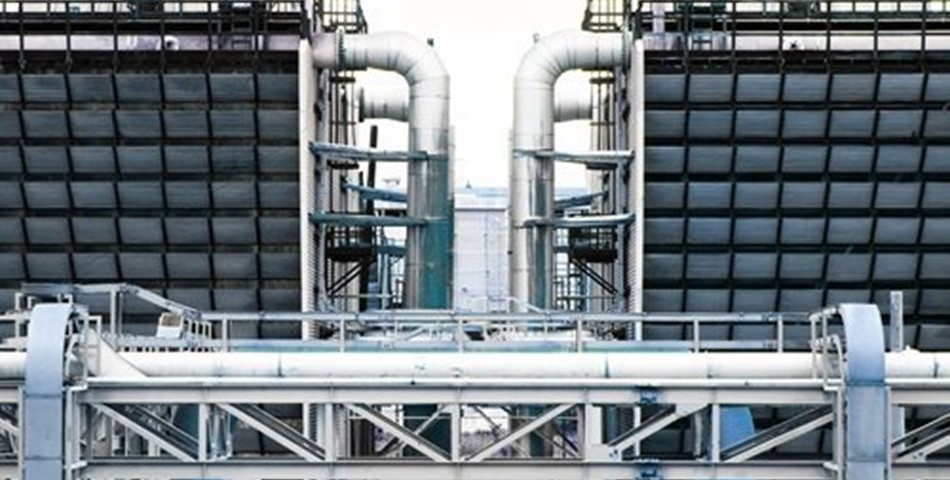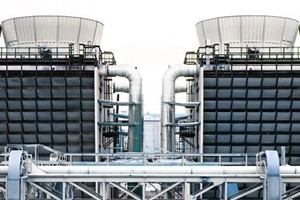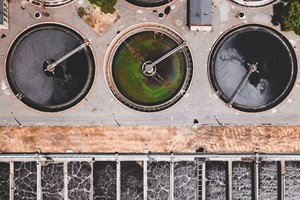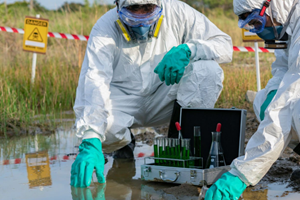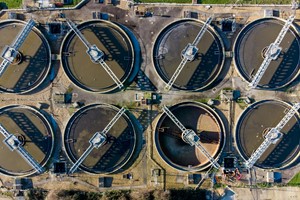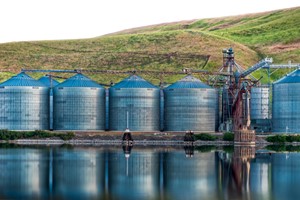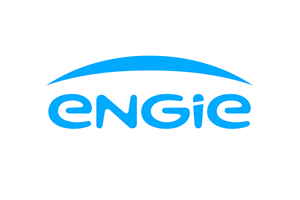When an industrial facility might require a cooling tower water treatment system, it is a decision that shouldn’t be taken lightly. Petrochemical plants, chemical manufacturers, refineries, and all kinds of large buildings and facilities using cooling towers, whether they’re used as part of the industrial process or for cooling/removing heat from the building. Improperly treating cooling tower feed water, circulation water, and blowdown can lead to several issues; the four most common being scaling, corrosion, fouling, and biological growth.
These issues can be detrimental to the success and efficiency of your cooling tower, affecting the energy and water usage of the cooling tower and increasing how much it costs to operate the unit in the long run. However, in most cases these issues are preventable by means of proper water treatment. Keep in mind that treatment methods will vary depending on your specific cooling tower chemistry, makeup water needed, and whether it’s an open- or closed-loop process, but this article breaks down how each of these issues would affect your cooling tower in general:
Scaling
When water is heated, certain compounds that might be soluble in low-temperature waters become insoluble in high-temperature water and can scale (form hard deposits) on surfaces within the unit if left untreated, plugging up and damaging pipes and internal surfaces and equipment. Some common compounds that scale cooling towers include:
- calcium carbonate
- calcium phosphate
- magnesium silicate
silica
In addition to temperature, alkalinity (pH) can also play a major role on scaling within a cooling tower. As pH increases, many scale-forming compounds decrease in solubility, precipitating out in higher rates when the water is heated. Another factor that can affect how much scale formation takes place is the amount of the scale-causing contaminants present in the water. If the volume of these scale-causing contaminates becomes greater than their natural saturation point due to evaporation in cooling tower, scale is likely to occur regardless off the alkalinity or temperature, so you can see there are several factors that will determine how much scale your cooling tower will accumulate.
Treatments to prevent these issues might include feed water and circulation side-stream filtration, pH control, chemical scale inhibitors, and monitoring concentration cycles and blowdown. As with any type of cooling tower water treatment, it’s best to consult your water treatment specialist to ensure the right balance is achieved, as each system will have individual characteristics, but in general, treating these issues before they have a chance to scale in the cooling tower will prevent these issues to begin with.


Corrosion
If cooling tower water isn’t properly treated, corrosion can occur. This happens when certain contaminants in the water, mainly gasses such as oxygen and carbon dioxide, cause the metal to degrade and return to its oxide state by means of an electrical or electrochemical reaction. This thins areas in the metal that, increasing chances of rupture. Corrosion is serious and can lead to equipment failure, plant downtime, or the loss of heat transfer. Different types of corrosion commonly seen in cooling towers include:
- Pitting; extremely destructive because it is concentrated on small areas, this type of corrosion is the hardest to detect and can perforate metal in a short timeframe.
- General; this type of corrosion occurs evenly across the surface of the metal and can contribute to fouling, reducing system efficiency.
- Galvanic; this type of corrosion occurs when two different metals come into contact enough to conduct electricity. The electrical differences attack the more active metal, corroding it rapidly.
In addition to dissolved gasses, some other factors that can lead to corrosion in a cooling tower can include:
- Bacterial contaminants
- Variations in temperature
- Alkalinity (pH)
- Dissolve and/or suspended solids
Choosing not to treat you cooling tower water for these corrosion-inducing contaminants can be costly and dangerous. Some solutions might include filtration, building the system with corrosion-resistant materials (such as stainless-steel piping), and using certain chemical corrosion inhibitors.
Fouling
Fouling occurs in cooling towers similar to scaling; it accumulates deposits, but these deposits are not as hard as scale. Some contaminants that cause fouling can include:
- Colloidal and suspended solids
- Biological contaminants
- Silt
- Sand
If left untreated, these contaminants can cause deposition severe enough to plug piping and heat exchangers and reduce the efficiency of the cooling tower. Depending on which contaminants are present and at what part of the cooling tower process, water treatment options can include certain chemical dispersants, side-stream filtration, periodic blowdown, and continuous monitoring.


Biological growth
The growth of microbiological contaminants in cooling tower water such as bacteria, algae, and fungi, can cause all of the aforementioned issues: corrosion and fouling of cooling tower equipment. Biological growth can occur in any kind of cooling tower system, but happens most in open-loop systems whereby the cooling tower water is more readily exposed to the elements and favorable environments for biological growth.
If you choose not to treat your cooling tower water for biological growth, chances are microbe growth will run rampant, cause leaks and fouling in your system, and promote slime formation that can reduce heat transfer and accelerate the rate of corrosion. Cooling towers can also grow harmful bacteria such as legionella, which is naturally occurring in surface water and has been known to cause people to get extremely sick and can even lead to death. Most states have mandates for treatment and testing.
Depending on the microbiological contaminants present, certain membranes are efficient, as well as certain biodispersants and oxidizing and nonoxidizing biocides.
In conclusion
Treating cooling tower water properly is essential to the success and efficiency of your process. Organic growth, fouling, scaling, and corrosion are all challenges that can reduce plant productivity and require costly equipment replacements down the road. When it comes to deciding the right treatment for your cooling tower water, it is extremely important to consult a water treatment specialist. The chemistry and required makeup water will depend on your plant’s individual needs.
SAMCO
www.samcotech.com



